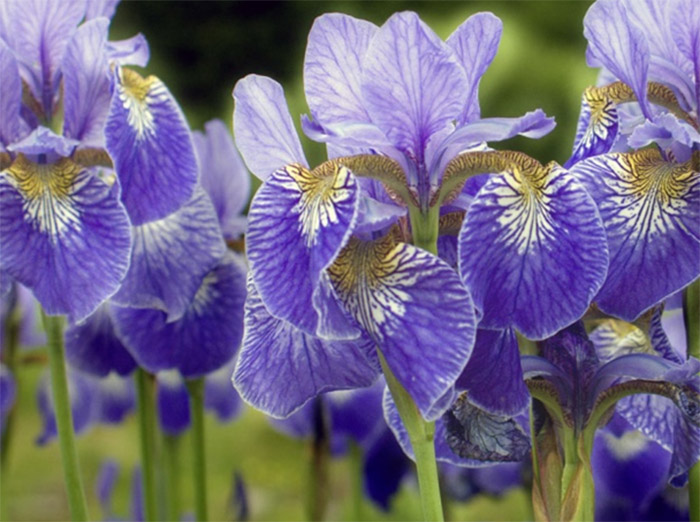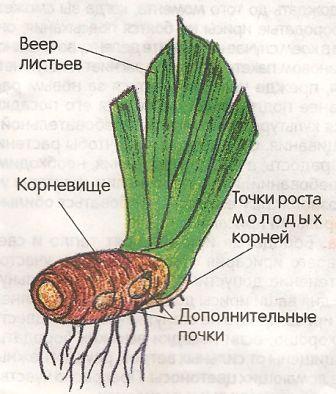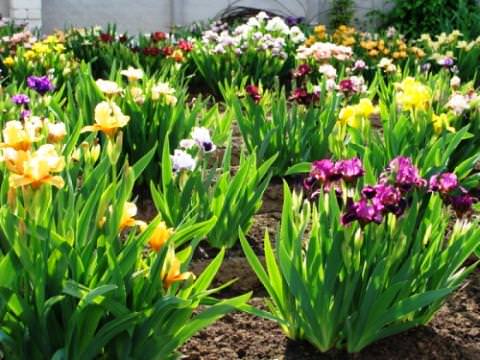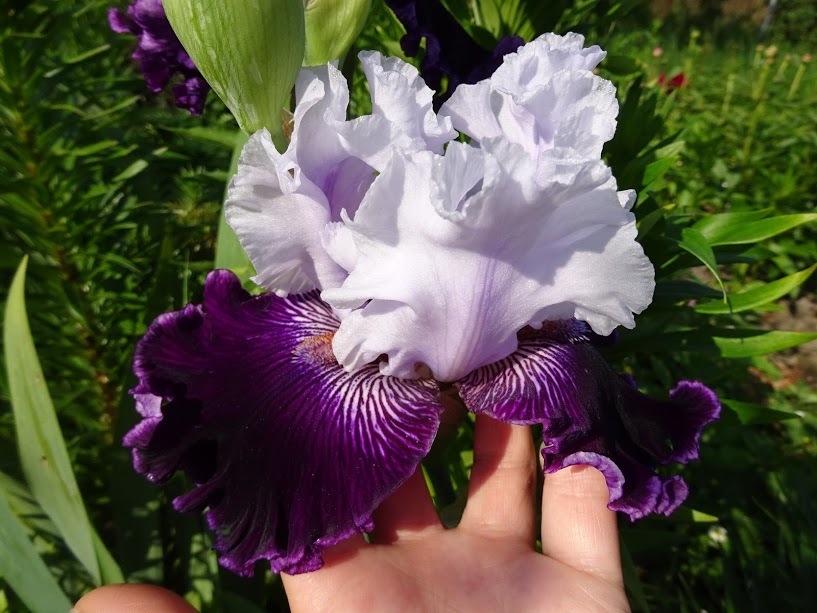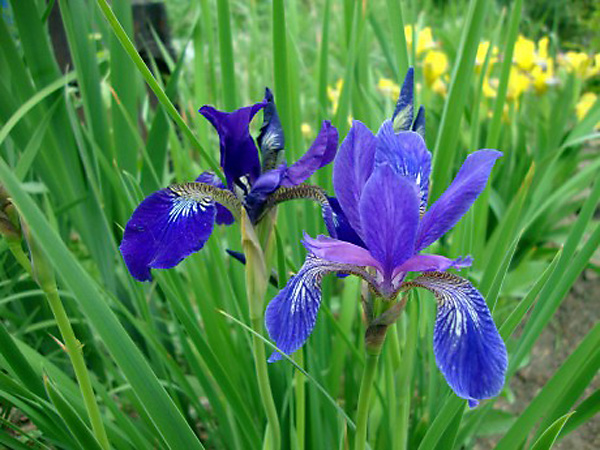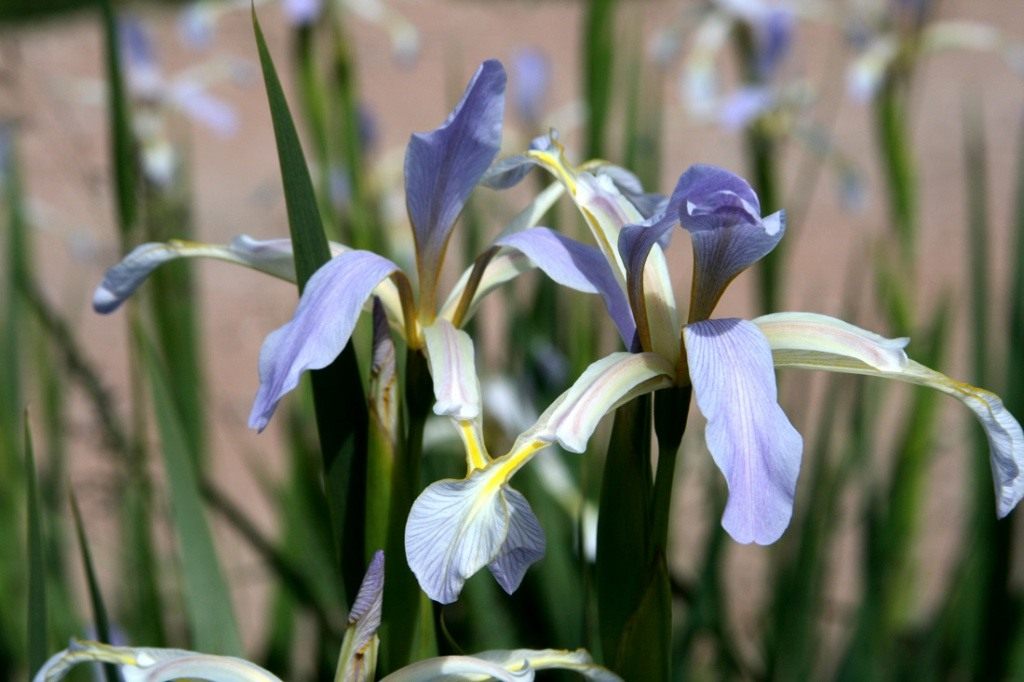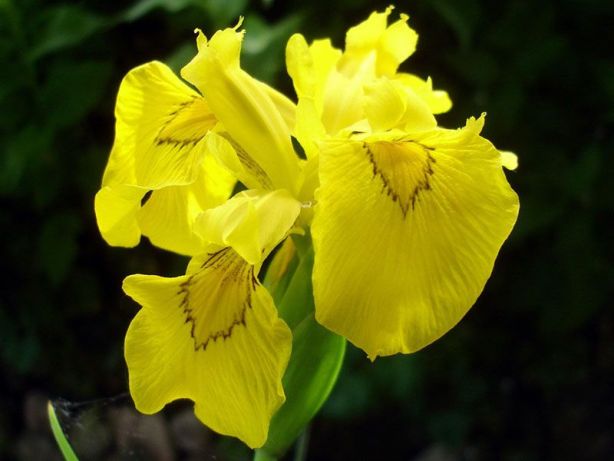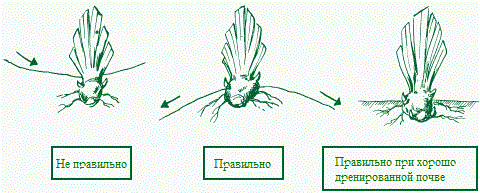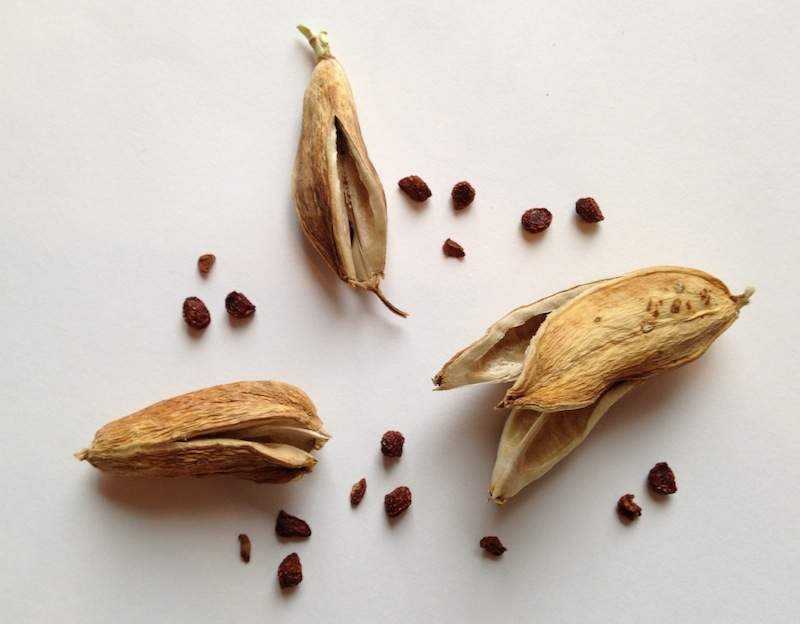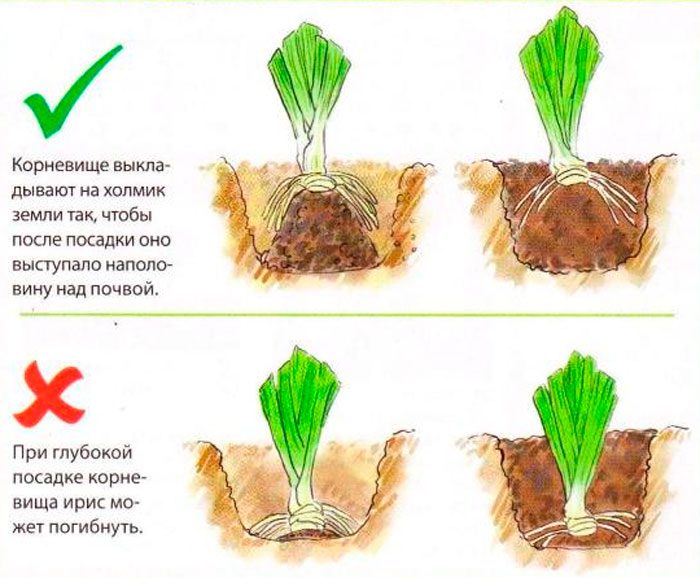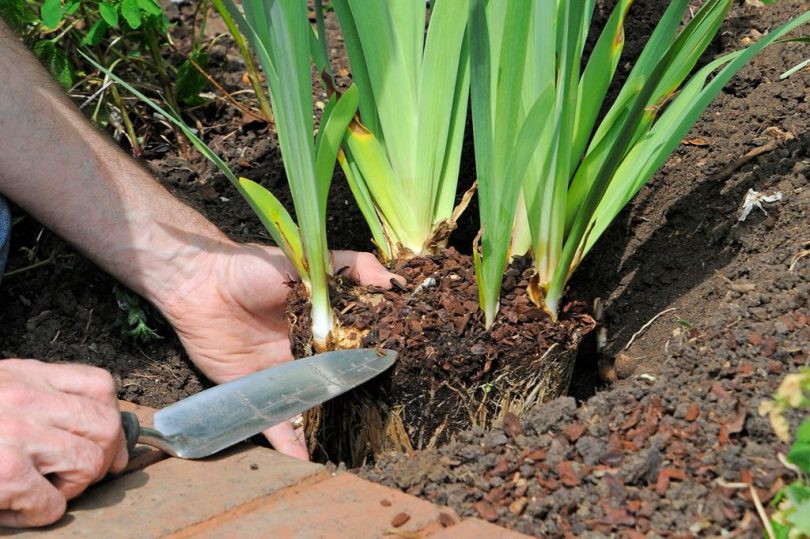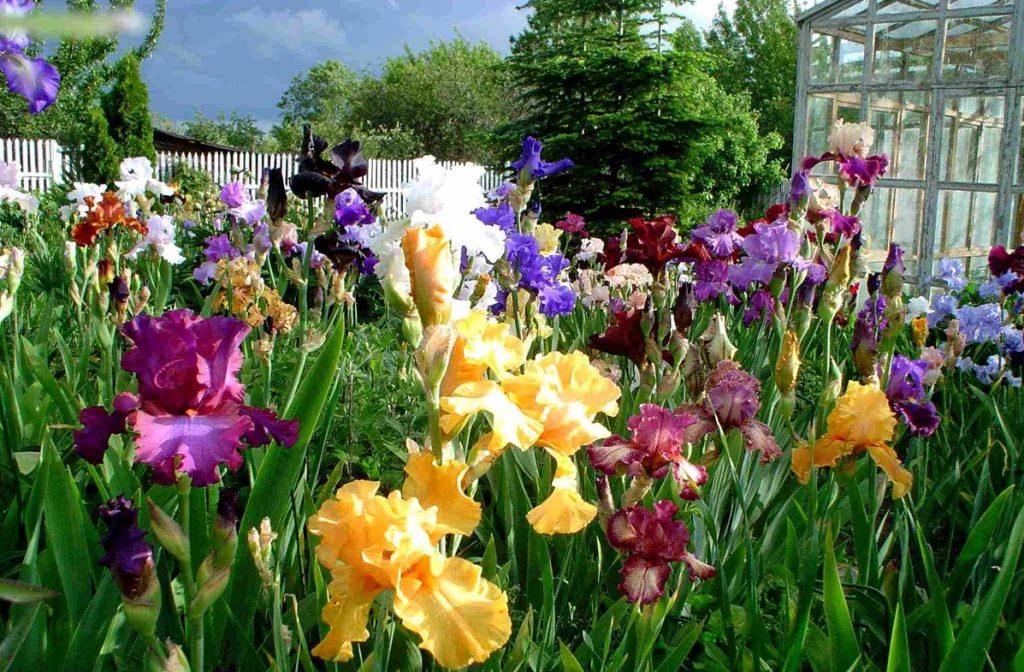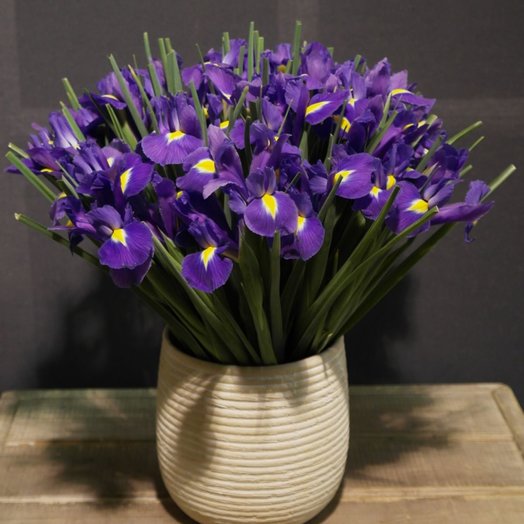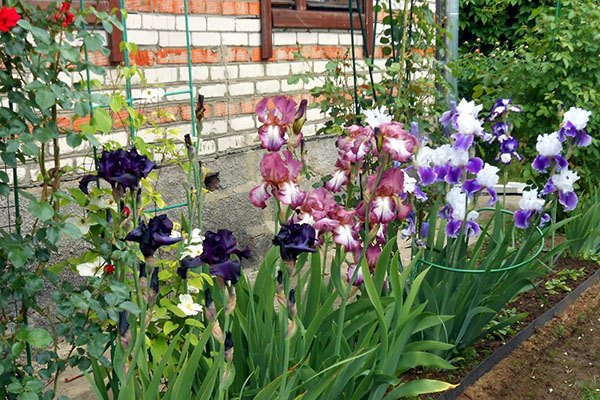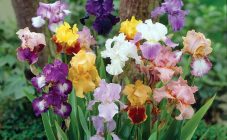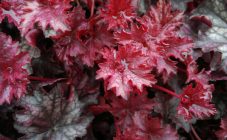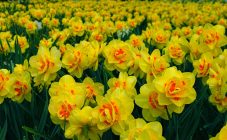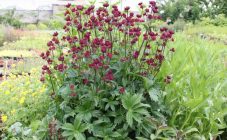Content:
Iris is a perennial unpretentious, hardy and not demanding flower to care for. You can plant it almost all year round. Plantings take root well both in autumn and spring. Florists prefer to have several varieties with different flowering periods on their site in order to be able to admire the beauty of the majestic flower for as long as possible. By 2018, breeders brought to the attention of flower growers about 700 species of this plant, which differ not only in the flowering period, but also in shape and shades. All of them have certain characteristics in agricultural technology and need some care.
General about irises
Iris is a flower whose name is associated with legends and legends. In translation, its name can mean "rainbow", but the language from which the translation is made plays an important role in the correctness of the interpretation. It is said that Hippocrates named the plant in honor of the rainbow goddess Iris. According to an ancient legend, when Prometheus brought fire to people, nature began to rejoice, and a bright rainbow flashed in the sky. She flaunted for a whole day, but with the onset of morning, when darkness receded, people noticed that the earth was covered with unusually beautiful flowers that looked like a rainbow. This is how Iris appeared on Earth. The value of this flower is now difficult to overestimate, especially since it continues to symbolize a beautiful natural phenomenon.
Florence owes its name to irises. It was named that way precisely because the fields around were completely covered with rainbow flowers. Iris have been cultivated for over 2000 years. They are used not only as an ornamental plant to decorate flower beds and gardens, but also as a raw material for the production of essences and the manufacture of perfumes.
Iris is a very useful plant, and not only because of its decorative qualities. Due to its rich chemical composition, it has found application in cosmetology, perfumery and even medicine. In different parts of the plant were found:
- flavonoids;
- essential oil;
- vitamin C;
- sugar;
- carotenoids;
- fixed oils;
- tannins;
- vitamin C.
Description of the plant
Iris flowers belong to the rhizome type of plants. Filamentary roots are located directly on the rhizomes. They have 1 or more annual peduncles, as well as a flat and thin sheet with a noticeable waxy coating. At the base, green leaves gather in fan bunches, the stem is almost non-leafy.
What does iris look like? It has single flowers, sometimes collected from small inflorescences. Often their delicate aroma is not very pronounced, but exceptions occur, and the fragrance of this plant fills the entire garden. Flowers have a variety of fancy shapes and rich colors. Flowering occurs in May-July, at the same time 2-3 flowers can bloom. The flowering period is 1-5 days. After its completion, fruits begin to form in the form of a three-nested box.
In addition to the cockerels themselves, there are flowers in nature that are very similar to irises in appearance, but have different botanical descriptions. These include:
- Alstroemeria;
- Iris water;
- Iridodictum;
- Kukushkin's tears, etc.
They all have different characteristics and growing conditions, external similarities with irises do not mean that they represent the same family.
Characteristics of crop varieties
From the point of view of botany, all species are divided into bearded and non-bearded. The main criterion for distinguishing is the presence or absence of hairs on the petals. It is easy to guess that such flowers are called bearded, the petals of which are covered with hairs. High varieties of this species are usually called Germanic. The most popular are the following:
- Baltic Sea;
- Bewilderbest;
- Acoma.
A wider species range is presented in non-bearded irises, including marsh, Siberian, Japanese and other types. The Siberian variety has a rich color range, but for all its beauty and majestic appearance, the flowers are completely devoid of aroma. The Japanese species is distinguished mainly by blue shades of color and a complete lack of smell. The following varieties are most suitable for growing in central Russia:
- Nessa-No-Mai;
- Solveig;
- Vasily Alferov.
Connoisseurs of elegance will love the Spuria-type iris. It can be grown in harsh climates. The plant staunchly tolerates not only winter cold, but also summer drought and looks very much like the bulbous type of irises Xyphium, however, the flowers of Spuria are much larger. The following varieties have the greatest decorative qualities:
- Lemon Touch;
- Transfiguration;
- Stella Irene.
There is a special variety of irises, adapted to grow in moist soil. The color of their flowers is yellow in most cases. The most popular representatives of this species are:
- Golden Queen;
- Flore Pleno;
- Umkirch.
The presented assortment of varieties is constantly replenished with new specimens with improved characteristics, so every connoisseur has the opportunity to find an iris for his individual taste and decorate a flower bed or a country garden with it.
Agrotechnics
Butterscotch flowers are amazing flowers with a rich species diversity. It is noteworthy that its frost resistance depends on the type of plant. The Japanese variety is only suitable for growing in warm climates. If there is a desire to cultivate it in northern latitudes, then in order to ensure the normal life of the flower, you will have to plant it in a pot and place it in a room. Bearded irises are most adapted to the climate of central Russia; Siberian varieties are capable of boasting very good cold resistance. Open ground is suitable for wintering them even in harsh climatic conditions.
Planting iris (or iris) preferably in a moist and fertile area with good drainage. If there is excessive moisture in the soil, then a groove should be dug to drain excess water. When processing heavy soil and preparing it for planting flowers, you need to fill the flowerbed with garden soil, sand and organic fertilizers. At the same time, 5 liters of garden soil and fertilizer should be applied for each square meter. It is best to neutralize the soil with bone meal.
The iris flower, which is also called the cockerel, should be propagated by dividing the roots or parts of the rhizome, on which buds must be present. This operation must be performed after the plant has sprouted in one place for at least 4 years. The best breeding season for flowers is late summer or early autumn.
Irises can be propagated by seeds, but this technology has a lot of features, it is not suitable for all varieties. In most cases, it is used in breeding work.
Landing
After the annual units of the iris roots have been divided into separate pieces with buds, they are placed in a warm and dry room for a couple of days. This is necessary so that protective wound tissue forms on the sections. As an additional measure of protection, the cuts can be sprinkled with crushed charcoal.
Roots with buds should be rooted in boxes in winter, placed indoors. The irises dug up from the fall until this moment are stored in a cool, dark place. In spring, plants can be planted in prepared flower beds. In this case, the spine is cut in such a way that its length is about 9 cm.
Havemove
Caring for irises does not cause many difficulties and hassle for the grower, however, without these measures, the plant will not be able to develop normally and fully, and also please the owner with a stormy and bright flowering. First of all, it is necessary to feed with mineral fertilizers containing potassium, phosphorus and nitrogen.
It is necessary to make preparations in equal parts for 3 times. The first time the flowers are fertilized as soon as the first sprouts hatch above the ground, then a month later, the third time - after the end of flowering.
Growing irises
Growing irises is not difficult even for inexperienced beginners. The flower takes root well and is able to grow in areas with neutral or weak soil acidity. A pH of 6.8 is ideal. If the acidity turns out to be increased, then the irises will actively grow and increase the green mass, but the owner will not see flowering.
The soil for planting irises is deoxidized using wood ash, chalk or dolomite flour. To improve the structure of the soil, river sand and peat are introduced. Immediately before planting flowers, the flower bed is dug onto a shovel's bayonet and the roots of weeds are carefully selected. Fresh manure should not be applied as fertilizer, because this can provoke putrefactive root processes.
Iris roots should not be planted very deeply. They perfectly tolerate hot and dry weather, but with regular watering, the flower blooms large and beautiful. In order for the decorative property of the plant to increase, it is recommended to plant it in partial shade, for example, under a tree. The exception is the bearded iris, which the sun loves, does not tolerate drafts and stagnant water. Therefore, it is better for him to choose a place on a hill, to provide good drainage. Siberian and marsh varieties, on the contrary, prefer areas with high humidity. The supply of nutrients in the ground is necessary for absolutely all varieties, therefore, before planting irises, the beds must be well seasoned, disinfected with a fungicide.
Can irises be pollinated
Theoretically, the cross-pollination of irises is quite possible, but in practice it is almost impossible to meet such cases. The fact is that insects carrying pollen are responsible for the cross-pollination of these flowers. The results can be seen only after sowing the seeds and growing a new plant from them. As you know, irises do not multiply by self-seeding, therefore specimens with new colors cannot appear on their own. You can plant completely different varieties of these rainbow flowers nearby and not be afraid that over time they will be pollinated.
How long do irises stand in a vase
On the beds, irises look gorgeous, but it is difficult to resist the temptation to decorate your home with them. Only now, without observing certain rules, these handsome men can lose their luxurious appearance on the first day. In order for a flower miracle to stand in a vase for at least a few days, it will need good care.It is necessary to cut irises late in the evening or early in the morning, when they have accumulated the greatest supply of nutrients. In addition, the buds and stems contain vital moisture, which does not evaporate as quickly as during the daytime. During the day, cutting is carried out only in cloudy weather.
Irises cut in the rain are not suitable for transport. The fact is that moisture has accumulated on their leaves, provoking self-heating processes, as a result of which the flowers darken, quickly deteriorate and no longer represent a decorative value. To keep them as long as possible, only the most brightly colored buds need to be selected. They try to make the cut as close to the root as possible. Before lowering the stem into the vase, it must be trimmed obliquely.
The water temperature for irises in the vase should be slightly higher than room temperature. It is advisable for these purposes to cool the boiled liquid and add a little sugar there. A piece of copper wire or charcoal will help keep the flowers from rotting in the vase. Place the vessel away from radiators, heaters and air conditioners.
Fading or withering buds must be periodically removed, new ones will bloom instead. The water in the vase must be replaced with fresh water prepared using the same technology as the first time.
Irises are able to decorate a chic home flower garden. The variety of varieties and colors makes it possible to choose a flower to suit your tastes and preferences. The different flowering period allows you to create garden compositions that will delight the eye for a long period of time. Iris is considered one of the most unpretentious, beautiful perennial flowers, emitting a bewitching floral scent, therefore, it is a real find for inexperienced beginners who want to decorate the site without knowing the disappointment. However, before you go to buy planting material, you need to thoroughly study the theoretical material and familiarize yourself with the information which varieties are suitable for growing in a particular area, and what needs to be changed in the flowerbed so that the plant feels as comfortable as possible there.
